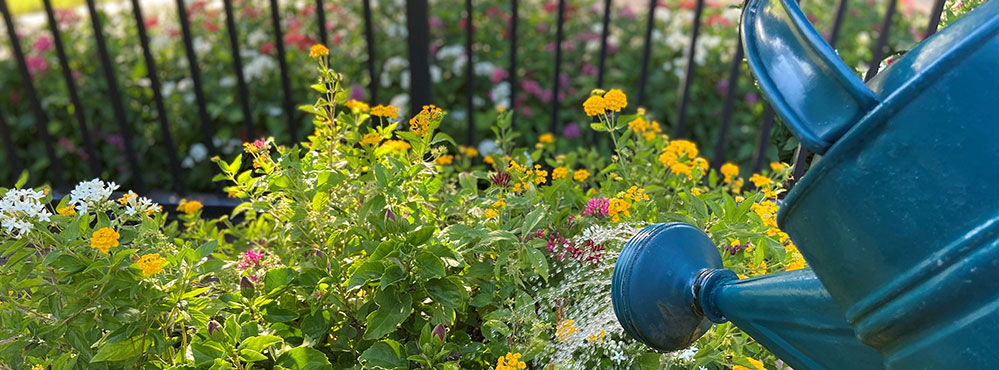Saving today means water tomorrow Posted on August 11, 2020

Only water on Tuesdays and Fridays. Even numbered residential addresses may water on Mondays and Wednesdays; odd numbers on Thursdays and Sundays. Water only between the hours of midnight and 7 a.m. Watering is not permitted between the hours of 10 a.m. and 7 p.m.
If outdoor watering guidelines like these sound familiar, it’s because they’re becoming more common as communities across Texas are thinking ahead about their water supplies.
The 2017 State Water Plan estimates the state’s population will increase more than 70 percent by the year 2070. With that population gain comes a higher demand on water. But what won’t be increasing? Texas’ existing water supplies—those that can be relied on in the event of drought.
Fortunately, the state plans ahead for this growth by identifying strategies to provide additional water supplies to meet water needs in the next 50 years. Conservation is by far the most frequently recommended strategy by regional water planning groups, the backbone of the state water planning process. It’s a way to stretch the water supplies that we currently have, and it’s also the cheapest solution to ensure communities have enough water.
“It’s a very popular strategy among cities and water utilities,” said Kevin Kluge, Director of Conservation and Innovative Water Technologies at the Texas Water Development Board. “It demonstrates that a city is interested in how their water is being used and being cognizant of how they can use water more efficiently.”
Municipal conservation strategies may include encouraging the use of water-efficient fixtures and appliances, drought-tolerant landscapes, fixing water leaks, smart water meters, and modifying system processes to save water, among other options.
Implementing city-wide watering restrictions is a more public-facing strategy. During summer months when temperatures are high and Texas generally receives lower amounts of rainfall, watering restrictions are often put in place.
“People irrigate their lawns more, so that translates into higher water use for the utility,” said Kluge. “Landscaping water use can be a significant water use for households. In summer months, you have a lot of people using water at the same time, so utilities put restrictions in place to spread out that use.”
Texans may recall the most recent multi-year drought that spanned 2011 to 2014. At the end of July 2011, approximately 75 percent of the state was experiencing exceptional drought—the worst category of drought. Reservoirs and water supplies were low. Water conservation was on people’s minds.
But between the end of that drought and now, the state has experienced terrible, unfortunate floods. When the problem is too much water, the misperception that water conservation is unnecessary tends to creep into minds.
At the beginning of August 2020, the U.S. Drought Monitor reported that 33 percent of the state was in drought, and none of the areas affected were in the exceptional drought category. Although drought has proven—so far—to be milder this summer, making the best use of the water that we have is still critical.
“The question becomes, why should we be concerned now? The answer is, you never know when the next drought will start. We must be aware that the water we save today will be there for us tomorrow,” said Kluge.
Individual conservation efforts can add up. For indoor and outdoor tips on saving water, the Texas Water Development Board offers several resources and publications.
This article is posted in Water Planning / Water Supply / Conservation .